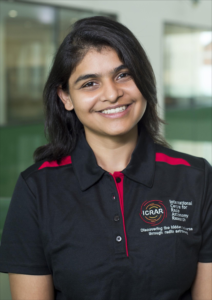18 March 2021: N/S America 4pm EDT, 1pm PDT / 19 March 2021: Australia 7am AEDT
In the early Universe one might expect only star-forming galaxies but there is now substantial evidence that some massive galaxies have quenched star-formation within the first billion years of galaxy evolution. These massive quiescent galaxies (MQG) have proven difficult to reproduce in sufficient numbers in cosmological hydrodynamical simulations. While the latest generation of simulations have begun to achieve consistent number densities through detailed prescriptions of AGN feedback, the observed quenched galaxies still appear to quench at earlier epochs. This begs the question: how early in the Universe can we still find quiescent galaxies? Additionally, high redshift MQGs host old stellar populations that can provide insights into the star-formation conditions during the epoch of reionization. The intense star-bursts that likely formed MQGs are expected to have a different distribution of stellar masses, the initial-mass function, compared to local elliptical galaxies. I present work done to identify these rare MQGs at high redshift based on the FENIKS survey and determine some of their physical properties using a combination of deep HST imaging and MOSFIRE spectra.

I am an extragalactic astronomer interested in massive galaxies in the early Universe. I specialise in squeezing signal out of noisy data. I’m eagerly anticipating the launch of JWST so I can do the same, just at a different mass range.
Understanding the build-up of stellar mass is one of the primary goals of extra-galactic astronomy. Various theoretical studies find that star formation activity for galaxies in high density regions peaks between redshift z=3-5, whereas for galaxies in the low density environments it peaks between redshift z=1-2. I will present my work on how environment affects the stellar mass build-up in galaxies. We measure the star formation histories of galaxies in a proto-cluster at z~2 using the Spectral Energy Distribution fitting module Prospector. We compare the relative star formation histories of galaxies at z=2 as a function of their environment and stellar masses. I will also present a comparison of star formation histories from Prospector to star formation histories from IllustrisTNG cosmological simulations and discuss the role of mergers in shaping the star formation histories of galaxies.

Anishya Harshan is a PhD student developing expertise in spectroscopic surveys of cosmic noon galaxies. Her work focuses on how ISM properties and star formation evolves in different density environments in the high redshift universe.
25 March 2021: Europe/Africa 10am GMT, 11am CET / Australia 9pm AEDT
The latest observing runs of Advanced LIGO/Virgo have brought dozens of new detections of compact binary mergers, ushering in the era of gravitational-wave catalogues. By studying the populations of binary black holes we are learning about the mass and spin distributions of black holes, allowing us to probe stellar evolution and binary formation mechanisms. In this talk, I describe the emerging picture of black hole mass and spin distributions with recent results from LIGO/Virgo.
 Shanika Galaudage is a PhD student at Monash University. Her research is focussed on understanding the formation and evolution of compact objects such as black holes and neutron stars using gravitational-wave observations.
Shanika Galaudage is a PhD student at Monash University. Her research is focussed on understanding the formation and evolution of compact objects such as black holes and neutron stars using gravitational-wave observations.
On the 21st of May, 2019, gravitational-wave observatories LIGO and Virgo detected something we had never seen before. The short signal they captured — more of a low-pitched ‘blip’ than a ‘chirp’ — emanated from the creation of an intermediate-mass black hole, making GW190521 the first direct evidence of the existence of such objects. This intermediate-mass black hole was formed from the merger of two smaller black holes, at least one of which had a mass that is troublesome to explain through stellar evolution. Pair-instability supernovae are thought to cause a “gap” in the mass distribution of black holes, such that black holes with masses between 60 and 130 times the mass of the Sun should not exist. The components of GW190521 had masses of about 85 and 65 solar masses. So how did these “forbidden” black holes come into existence? In this talk, I will present the results of the LIGO—Virgo Collaboration’s analysis of GW190521. I will explain how we can learn a lot about the source from such a short signal, and showcase analyses performed by myself and other Monash researchers. I will discuss potential formation mechanisms for this mysteriously massive binary. Finally, I will discuss the implications for the population of compact binaries if any of these formation mechanisms are confirmed.

Isobel Romero-Shaw is a PhD student studying gravitational-wave astrophysics at Monash University, with a focus on parameter estimation for eccentric compact binaries.
15 April 2021: N/S America 4pm EDT, 1pm PDT / 16 April 2021: Australia 6am AEST
It is known that the Galactic stellar halo holds crucial information for disentangling the mass assembly history of the Galaxy. The chemo-dynamical information encoded in halo stars enables the reconstruction of the Milky Way. Of particular importance is the halo population of the inner Galaxy, as it likely retains pivotal information that may help decode early stages of the formation and mass assembly of the Milky Way, but however has so far been concealed due to the limitations in observing such regions due to high stellar density and dust extinction. In this talk, I will provide evidence for the discovery of a metal-poor structure located within the inner Galaxy which displays chemo-dynamic signatures of accreted populations. Characterised by a chemical composition resembling those of low mass satellite galaxies of the Milky Way, this structure appears to be chemically and dynamically detached from its more metal-rich counterparts in the inner Galaxy. We speculate this newly identified inner Galaxy structure (dubbed Heracles) is associated with an accretion event that occurred in the early life of the Milky Way, which constituted a major building block of the Milky Way halo, and played a major role in the formation of the Milky Way.
 Danny Horta is a third year PhD student at Liverpool John Moores University (UK) who is currently undertaking a year long research visit at the University of Queensland in Brisbane. He is primarily interested in Galactic archaeology, and in particular on studying the formation and evolution of the Milky Way Galaxy. He is enthusiastic about using the latest modelling and statistical techniques on data from large stellar surveys and numerical cosmological simulations in order to constrain the accretion history of the Galaxy and the formation and evolution of its constituent globular cluster population. Outside of astronomy, Danny used to be a professional basketball player in the UK. He also enjoys travelling, playing an array of sports, nature, and wildlife.
Danny Horta is a third year PhD student at Liverpool John Moores University (UK) who is currently undertaking a year long research visit at the University of Queensland in Brisbane. He is primarily interested in Galactic archaeology, and in particular on studying the formation and evolution of the Milky Way Galaxy. He is enthusiastic about using the latest modelling and statistical techniques on data from large stellar surveys and numerical cosmological simulations in order to constrain the accretion history of the Galaxy and the formation and evolution of its constituent globular cluster population. Outside of astronomy, Danny used to be a professional basketball player in the UK. He also enjoys travelling, playing an array of sports, nature, and wildlife.
The Kepler mission, thanks to its exquisite photometry, revolutionised the field of asteroseismology, allowing the determination of stellar parameters such as masses, radii and (model-dependent) ages for thousands of Red Giants with unprecedented level of precision. Some of these Red Giants whose solar-like oscillations have been detected seem to have characteristics that are not expected from Galactic Chemical Evolution according to recent studies: low-mass (old) and metal-rich; young and metal-poor; young and alpha-rich. In this talk I will show preliminary results from my ongoing project, which aims to make an in-depth characterisation of some of these unusual stars with the observational information currently available, taking advantage of the powerful combination between asteroseismology and high-resolution spectroscopy, as well as data from the Gaia mission. We combine high-quality spectra from HIRES@Keck with effective temperatures derived though the InfraRed Flux Method, and seismic surface gravities, to derive an 1D-LTE chemical analysis of a sample of 23 Red Giants in the Kepler field, looking for signatures that might explain their unexpected characteristics. Also, taking advantage from years of Kepler observations, we do a grid-based modelling analysis to derive fundamental stellar parameters (masses, radii, ages, luminosities) with high precision, and Gaia data is employed to investigate the dynamics of these objects.

PhD candidate at the RSAA/ANU, holds bachelor’s degrees in Physics and Journalism, and a master’s degree in Physics. Main research interests involve Galactic Archaeology, Stellar Physics and development of computational tools for Astronomy.
22 April 2021: Europe/Africa 10am BST, 11am CEST / Australia 7pm AEST
While a direct detection of the dark-matter particle remains very challenging, the nature of dark matter can potentially be constrained indirectly — by comparing the properties of substructure in galactic haloes with predictions from the phenomenological dark-matter models, such as the cold, warm or hot dark matter. Whereas these models are practically indistinguishable with respect to the predicted characteristics of high-mass sub-haloes, the critical difference lies in the abundance and statistical properties of low-mass sub-galactic structure. Galaxy-galaxy strong gravitational lensing provides a unique opportunity to search for gravitational signatures of such low-mass structure in lens galaxies beyond the Local Group. In this talk, I will present a novel approach to observationally constrain the statistical properties of low-mass sub-galactic structure in the inner regions of massive elliptical lens galaxies, based on the power spectrum of the resulting surface-brightness anomalies in highly-magnified galaxy-scale Einstein rings and gravitational arcs. A future comparison of these results with the predictions from hydrodynamical simulations might either verify the CDM paradigm or require its substantial revision.
 Dr Dorota Bayer is an extragalactic astronomer specialising in substructure lensing and its application to the dark-matter problem.
Dr Dorota Bayer is an extragalactic astronomer specialising in substructure lensing and its application to the dark-matter problem.
Weak gravitational lensing provides an observational avenue to determine the relation between the halo mass and stellar mass of a galaxy. While we expect two galaxies with the same stellar mass to have different halos, at the moment, existing weak lensing studies are only sensitive to an average halo mass. In this talk, I will present an end-to-end methodology to measure the effects of weak lensing on individual galaxy-galaxy systems exploiting their kinematic information. I will present the results of analysing 21 weakly lensed systems and present ways to overcome weak lensing limitations and be sensitive to the dispersion in halo masses.

The main motivation of my work is to make direct measurements of the masses and shapes of dark matter halos around individual galaxies. I have focused on analysing the velocity field of weakly lensed galaxies to infer a degree of shear, which has provided results 10 times more precise than conventional approaches.
29 April 2021: N/S America 4pm EDT, 1pm PDT / 30 April 2021: Australia 6am AEST
Ultra-diffuse galaxies (UDGS) are a mysterious class of dwarf galaxy, which have much larger physical sizes than normal galaxies in the same stellar mass range and are thus characterised by extremely low surface brightness. Most of what we know of these objects comes from dense environments like local galaxy clusters, where they are easily distinguished from the background thanks to their high surface densities and large angular sizes. However, difficulties in estimating distances to more isolated UDGs have so-far inhibited our understanding of UDGs outside of these environments. In my talk, I will describe results obtained through novel analysis methods to address two questions: i) whether a population of UDGs actually exists in the field at all and ii) what fraction of isolated UDGs are no-longer forming stars. These questions are key to understanding the relative importance of secular formation channels throughout the UDG population. We find a significant “evidence of absence” for a quiescent, cluster-like population of UDGs in the field, with most field UDGs having much bluer colours but comparable mass formation efficiencies. Additionally, we constrain the quiescent fraction of isolated UDGs to less than one quarter. These results strongly indicate secular channels play an important role in UDG production, whereas high environmental densities are primarily responsible for quenching them.
In order to simultaneously explain the observed mass of present-day galaxies and that of those in the early Universe (i.e. 10-11 billion years ago), models of that evolution predict large mass losses during the interaction processes. Thus, a significant number of stars initially belonging to each galaxy must be ripped out with every interaction. Those stars congregate in diffuse ensembles that sprawl across the centers of galaxy clusters and groups, where galaxy interactions are more likely. Galaxies spend most of their lives in groups so the intra-group light (IGL) that forms during interactions within these environments is the predecessor of the intra-cluster light (ICL) in clusters of galaxies. Unveiling the quantity and origin of both ICL and IGL, forms a fossil record of all the dynamical processes a system has undergone and provides a holistic view of a group’s interaction history. IGL is typically detected at very low surface brightnesses, so its study is a technical challenge. In this work, we examine Galaxy And Mass Assembly (GAMA) survey groups within Hyper-Suprime Cam (HSC) Subaru Strategic Program Public Data Release 2. We will present the first IGL measurements from HSC data and compare these results with theoretical predictions to infer the dominant component in the formation of this important component.
 I am a postdoctoral research associate at UNSW Sydney. My research aims to understand the formation and evolution of galaxies studying their low surface brightness regions. I develop new techniques to detect the dimmest structures in galaxies —like thick discs and truncations—, or within clusters of galaxies —as the intracluster and intragroup light.
I am a postdoctoral research associate at UNSW Sydney. My research aims to understand the formation and evolution of galaxies studying their low surface brightness regions. I develop new techniques to detect the dimmest structures in galaxies —like thick discs and truncations—, or within clusters of galaxies —as the intracluster and intragroup light.
6 May 2021: Europe/Africa 10am BST, 11am CEST / Australia 7pm AEST
I will present results from neutral atomic hydrogen (HI) observations of Hydra I, the first cluster to be observed by the Widefield ASKAP L-band Legacy All-sky Blind Survey (WALLABY) on the Australian Square Kilometre Array Pathfinder. For the first time we show that WALLABY can reach its expected sensitivity of 1.6 mJy/beam. Leveraging the sensitivity, spatial resolution and wide field of view of WALLABY, we identify a recently infalling cluster member, ESO501-G075, that lies near the virial radius of Hydra I (~1.44Mpc) at a projected distance of ~1.12Mpc and displays a HI tail. ESO501-G075 shows a similar level of morphological asymmetry as another cluster member, which lies near the cluster centre (~0.14Mpc) and shows signs of experiencing ram pressure. I investigate possible environmental processes that could be responsible for producing the observed disturbance in the HI morphology of ESO501-G075. I rule out tidal interactions as ESO501-G075 has no nearby neighbours within ~0.34Mpc. I use a simple model to determine that ram pressure can remove gas from the disc at radii >25kpc. I conclude that, as ESO501-G075 has a typical HI mass compared to similar galaxies in the field and its morphology is compatible with a ram pressure scenario, ESO501-G075 is in the early stages of experiencing ram pressure. WALLABY will enable similar analysis to investigate environmental effects on gas in and around clusters, including in galaxies infalling for the first time.

I work on surveys of the neutral atomic hydrogen (HI) in galaxies, in particular the WALLABY HI all-sky survey on the Australian Square Kilometre Array Pathfinder (ASKAP). I am interested in the role of the environment on the evolution of galaxies and how the environment affects galaxies’ HI content.
One of the principal systematic constraints on the Epoch of Reionisation (EoR) experiment using the Murchison Widefield Array (MWA) is the accuracy of the foreground calibration model. Recent results have shown that highly accurate models of extended foreground sources, and including models for sources in both the primary beam and its sidelobes, are necessary for reducing foreground power. To improve the source models in the MWA EoR fields, we conducted the Long Baseline Epoch of Reionisation Survey (LoBES). This survey consists of multi-frequency observations, spanning 104 – 230 MHz, of the MWA EoR fields and their eight neighbouring fields using the MWA Phase II extended array. These observations provide high-resolution, uv-components to compliment the existing uv-plane sampling of these fields. Additionally, due to the MWA Phase II extended array’s better imaging capabilities, this survey improves upon the sensitivity of the GLEAM survey by roughly a factor of 5 in the EoR fields. This talk will present the full LoBE survey results and discuss the next steps for foreground modelling for the MWA EoR experiment.
 I am a postdoctoral research fellow at ICRAR-Curtin and work within the ASTRO 3D Epoch of Reionisation (EoR) group. My main research involves building better foreground models for the Murchison Widefield Array (MWA) EoR experiment. This research is key to disentangling the EoR signal and in so doing revolutionising our understanding of how the first luminous objects in the Universe formed. I am also interested in understanding magnetic emissions from radio-bright, low-mass stars. I use various radio telescopes to characterise the radio emissions from very magnetically active dwarf stars to inform stellar magnetic models. This work is a continuation of my PhD research, which I completed at the University of Iowa.
I am a postdoctoral research fellow at ICRAR-Curtin and work within the ASTRO 3D Epoch of Reionisation (EoR) group. My main research involves building better foreground models for the Murchison Widefield Array (MWA) EoR experiment. This research is key to disentangling the EoR signal and in so doing revolutionising our understanding of how the first luminous objects in the Universe formed. I am also interested in understanding magnetic emissions from radio-bright, low-mass stars. I use various radio telescopes to characterise the radio emissions from very magnetically active dwarf stars to inform stellar magnetic models. This work is a continuation of my PhD research, which I completed at the University of Iowa.
13 May 2021: N/S America 4pm EDT, 1pm PDT / 14 May 2021: Australia 6am AEST
Jonah Gannon, Swinburne University of Technology - The Dark Matter Content of Ultra-Diffuse Galaxies
Ultra-Diffuse Galaxy (UDG) is a term recently coined for use on galaxies of large size and low surface brightness. While their existence has been known about for decades it is only recently they have been detected in large numbers. To reproduce the full breadth of their observed properties we must examine current theories of galaxy formation to reconcile their existence with the ΛCDM paradigm. In this talk I discuss the clues to UDG formation embedded in their dark matter halo. I place particular emphasis on the extraordinary constraining power measurements of their stellar velocity dispersions have on their formation scenarios. I examine their total dark matter halo mass, a fundamental parameter in proposed formation scenarios. I discuss the great importance of correctly performing a comparison of observed masses with total halo masses, and the pitfalls therein. This work is enabled by my new data reduction techniques, optimised for the low surface brightness regime, for which I will provide a brief summary. I conclude with a look into the future in which UDG observations analysed with these optimized techniques will inform the next generation of galaxy formation simulations.

Jonah Gannon is an extragalactic astronomer interested in all things low surface brightness (objects fainter than the night sky). He is currently studying the formation of large, extremely faint galaxies dubbed `Ultra-Diffuse Galaxies (UDGs)’.
VIEW THIS SEMINAR ON YOUTUBE
The Galactic ASKAP Survey (GASKAP) is one of several selected ASKAP Survey Science projects dedicated to mapping neutral hydrogen (HI) and OH associated with the Milky Way and the nearby Magellanic System. These observations will provide data at unprecedented angular and spectral resolutions to probe critical outstanding questions regarding star formation and galaxy evolution. I will summarize exciting science highlights from the pilot survey observations, including three separate 25 square degree fields centered on the Small Magellanic Cloud, Magellanic Bridge and Magellanic Stream. These highlights include the properties of a sizable population of compact clouds at anomalous velocities in each field and the efforts to characterize turbulence as traced by HI. In addition to these science highlights, I will also discuss how our custom imaging pipeline overcomes several technical challenges related to the processing of large data sets, such as joint imaging visibilities from 36 simultaneous ASKAP beams.

I am currently a postdoc in Dr. Naomi McClure-Griffiths group at the Australian National University. My primary scientific interest is to use the high angular and spectral resolution GASKAP data to characterize the turbulent properties of nearby neutral hydrogen and investigate links to other ISM tracers.
20 May 2021: Europe/Africa 10am BST, 11am CEST / Australia 7pm AEST
SED-fitting techniques, which use multi-wavelength photometry from galaxies in the low-z Universe to infer their star formation histories (SFHs), are becoming an increasingly popular tool to generate the cosmic SFH, an essential ingredient in understanding the build-up of galaxies. Up until now, however, these techniques have not implemented an evolution in the metallicity of individual galaxies. In this talk, I will present results using a new SED-fitting code ProSpect, considering an evolving metallicity, to derive star formation histories of ~7,000 z<0.06 galaxies from the GAMA survey. By implementing a physically-motivated metallicity evolution for individual galaxies, we recover not only the observed cosmic SFH, but we can also extract the cosmic evolution in metallicity. I will show that this implementation has provided a marked improvement when compared with the results of other SED-fitting techniques, and that we are able to recover a realistic evolution of gas-phase metallicity within our sample. As I will show in this talk, this enables us to predict the evolution of the mass-metallicity relation to high-z, and to low stellar masses. Finally, I will also show the resulting cosmic metal mass density derived by this work, and how it relates to observational measurements.

Dr Sabine Bellstedt is an extragalactic astronomer who uses large redshift surveys like GAMA, DEVILS, and eventually WAVES, to analyse galaxy evolution across cosmic time.
We present a new model for the evolution of gas phase metallicity gradients in galaxies from first principles. We show that metallicity gradients depend on four ratios that collectively describe the metal equilibration timescale, production, transport, consumption, and loss. Our model finds that most galaxy metallicity gradients are in equilibrium at all redshifts. When normalized by metal diffusion, metallicity gradients are governed by the competition between radial advection, metal production, and accretion of metal-poor gas from the cosmic web. The model naturally explains the varying gradients measured in local spirals, local dwarfs, and high-redshift star-forming galaxies. We successfully use the model to provide explanations for a range of observations both in the local and the high-z Universe. 1. We use the model to study the cosmic evolution of gradients across redshift, showing that the gradient in Milky Way-like galaxies has steepened over time, in good agreement with both observations and simulations. 2. We also predict the evolution of metallicity gradients with redshift in galaxy samples constructed using both matched stellar masses and matched abundances, showing that massive galaxies transition from the advection-dominated to the accretion-dominated regime from high to low redshifts, which mirrors the transition from gravity-driven to star formation feedback-driven turbulence. 3. We further use the model to provide a physical explanation for the mass-metallicity gradient relation in the local Universe, and show how it is inherently connected to the mass-metallicity relation. 4. Our model can also explain the observed correlations between metallicity gradients and gas kinematics in high-z galaxies. Lastly, we show that gradients in local ultraluminous infrared galaxies (major mergers) and inverted gradients seen both in the local and high-redshift galaxies may not be in equilibrium.

Piyush is a PhD student at the Australian National University, working on the IMF of the first stars in the Universe using numerical simulations. His interests also include star and galaxy formation, in particular, understanding the physics of metal distribution in local and high-redshift galaxies.
27 May 2021: Europe/Africa 10am BST, 11am CEST / Australia 7pm AEST
Fast radio bursts (FRBs) are millisecond bursts in the radio, so bright that we observe them in distant galaxies at a rate of over 1000/day over the whole sky with large radio facilities. Despite their frequency and high energy output, what causes these bursts have eluded astronomers since their discovery over a decade ago. FRBs may result from magnetar bursts, binary neutron star mergers (producing kilonovae), neutron stars collapsing to black holes (blitzars) or several other theories.
Information on emission coherent with the radio burst in other wavelengths can help reveal the physical process that create these bursts.
I present results from an observational program that can do this called the Deeper Faster Wider (DWF) program. A key part of the DWF program is coordinating ~10 multi-wavelength observatories to perform deep, wide-field, fast cadence observations on the same field simultaneously to collect possible imaging on fast-evolving transients before they fade. Importantly, DWF can collect data before, during and after fast transients. Typically, a DWF observing run goes for a week.
In particular, I present results from DWF operation run 8 (DWF-O8). During DWF-O8, two FRBs were detected with the Murriyang Radio Telescope (formerly known as the Parkes Radio Telescope). We demonstrate DWF’s ability to collect simultaneous multi-wavelength data before, simultaneous with, and after an FRB using the Neil Gehrels Swift Observatory , Hard X-ray Modulation Telescope, AstroSat, the Korea Microlensing Telescope Network, the Huntsman Telescope, Murriyang and the Molonglo Observatory Synthesis Telescope, amongst others. We present what this can tell us about FRBs.

Dr. Jielai Zhang studies transient events such as fast radio bursts and kilonovae. She uses multi-wavelength data and machine learning techniques.
The Intergalactic Medium (IGM) is a difficult observe in the optical and UV due to the high temperatures (T ~ 10^6K) and low densities (n ~ 10^-6 cm^-3) leading to a lack of favourable transition lines. The dispersion measure (DM) of fast radio bursts (FRBs) provides a unique new way to probe the ionized baryons in the IGM. Cosmological models with different parameters lead to different DM-redshift (DM−z) relations. Additionally, the over/under-dense regions in the IGM and intervening galaxies’ circumgalactic medium lead to scattering around the mean DM−z relations. I will discuss the existing DM-z relations and the differences between them. I will also present the recent work I have published using the EAGLE simulations to study the DM-z relation, the scatter around it and feasibility of FRBs to constrain galaxy feedback models. I find that almost all of the FRBs found at low-redshifts have significantly larger observed DMs than predicted from simulations. Additionally I find that of the order 100 localised FRBs will be required at redshift z ~ 1, to constrain the AGN feedback of galaxies.

Adam Batten is a theoretical astrophysicist specialising in using hydrodynamic simulations to understand the intergalactic medium.
3 June 2021: Europe/Africa 10am BST, 11am CEST / Australia 7pm AEST
The early evolution of a star is intertwined with that of its planets and protoplanetary disk. Recent results reveal that some stellar chemical peculiarities arise from separation of dust from gas in planet-forming disks. Thus stellar composition build-up is linked to planet formation and disk evolution, but many aspects of this remain unclear. Disk evolution is thought to be rapid (3—5 Myr timescales), but age estimates have previously relied upon the ages of stellar associations, which can be unreliable because of age dispersion within associations and episodic accretion. Hence, the ages and intrinsic metallicities of protoplanetary disks are rarely known precisely.
I will discuss recent results for the pre-main-sequence star HD139614, where we use stellar pulsations to determine an age to better than 10% precision. I will describe the evolution of pulsation frequencies in pre-main-sequence stars and how this allows masses and metallicities to be determined in a degeneracy-free way, permitting stellar associations to be dated with much better precision. Finally, I will explain how a planet-forming disk has resulted in this star being chemically peculiar.

Dr Simon Murphy is an asteroseismologist, using stellar pulsations to probe stellar evolution, chemical peculiarities and to discover pulsation-timing binary systems.
Unresolved global H I line profiles of galaxies carry combined information about dynamics and mass distribution. Any asymmetry in such profiles due to local gravitational instabilities is expected to wash out in two or three rotational periods due to differential rotation. But observations suggest than asymmetric H I lines are the norm and hence their origin has been a long standing question. We investigate the physical origins of global H I line asymmetries in galaxies using the EAGLE simulations at z=0. Mock H I profiles are generated for galaxies that are selected based on the gas-fraction and stellar mass limits in xGASS. We introduce a novel H I line width measure which is independent of peak identification and traces the maximum halo circular velocity better than conventionally used measures. The inferred asymmetry is highly sensitive to choice of sightline towards a galaxy; a symmetric profile does not imply an axisymmetric galaxy. Line asymmetry is more robust to changes in velocity resolution than noise or distance to the galaxy. The asymmetries of xGASS-like realizations from EAGLE are consistent with xGASS. The rotational support of H I and line asymmetries are negatively correlated and the scatter increases with asymmetry, which is related to higher diversity in halo mass at higher asymmetries. Satellites are more asymmetric as a population than centrals. In general, line asymmetry is related to environmental processes and assembly history of the halo.

Aditya Manuwal is a PhD student at the UWA node of International Center for Radio Astronomy Research. He uses the EAGLE simulations to explore the relationship between dark matter halos and their galaxy populations. His interests include 21-cm emission lines, dark matter, and intergalactic medium.
10 June 2021: N/S America 4pm EDT, 1pm PDT / 11 June 2021: Australia 6am AEST
Large spectroscopic surveys such as GALAH, LAMOST, RAVE and APOGEE are collecting an unprecedented amount of information concerning stars found within our Milky Way galaxy. Surveys like these are typically used for galactic archaeology; determining the history and evolution of our host galaxy. However, these immensely rich data-sets can inform us of much more than just our galaxy’s evolution.
Exoplanetary scientists like myself can sieve through these data-sets to help improve the stellar parameters of potential planet-hosting stars and can even determine the composition of newly-found rocky worlds. NASA’s new planet-finding mission, TESS, will discover hundreds of rocky worlds beyond our Solar system. But how can we determine the chemical and geological composition of those worlds? Are these rocky exoplanets likely similar to those found within the Solar system? Or will they be unlike anything we have yet encountered?
My talk will show that the galactic archeology survey, GALAH, has been used to better classify over 47,000 stars being observed by TESS, and how we can use the stellar C/O, Si/Mg and Fe/Mg molar ratios from this survey to forward predict what types of rocky worlds will likely be discovered by TESS.
This talk will highlight the importance of cross-pollination between astronomical disciplines, and more importantly, the continued collaboration between Solar system and exoplanetary scientists, as future improvements in our knowledge of our own planets directly impacting our understanding of those beyond the Solar system.

Mr. Jake Clark is a planetary astrophysicist who discovers and characterises worlds beyond the Solar System.
High precision astrometry has entered a Golden Age, ushered in by the Gaia mission and surely culminating in the clearest 3D picture of the Milky Way to-date. The Gaia satellite has been revolutionary in many ways and yet, as a relatively small telescope, it is fundamentally limited in its study of both faint and crowded sources. Adaptive optics allows ground-based telescopes to operate at or near their diffraction-limit, overcoming seeing limitations and surpassing space-based telescopes purely by virtue of their size. The Multi-conjugate Adaptive-optics Visible Imager-Spectrograph (MAVIS) is an instrument being designed for the Very Large Telescope Adaptive Optics Facility. Equipped with MAVIS, the VLT will be the only 8m-class telescope, ground-based or otherwise, to operate at its diffraction limit (0.02 arcseconds) in the optical (550 nm). Designed with astrometry in mind, MAVIS must deliver precision astrometry at the 150 micro-arcsecond level, with a goal of 50 micro-arcseconds, the same requirement as the 39m Extremely Large Telescope. To verify this requirement will be met, we have created the MAVIS Image Simulator (MAVISIM), an image simulating tool to explore MAVIS science cases ranging from stellar to extra-galactic science. MAVISIM accounts for three major errors introduced by adaptive optics, including PSF field variability, along with imager and detector characteristics. In this first test of MAVISIM, we have investigated both the astrometric capabilities of MAVIS and a key science case for the instrument, the presence of intermediate mass black holes (IMBHs) in globular clusters. In this talk we will present exciting initial results from MAVISIM showing that MAVIS will: i) meet it’s astrometric requirements and ii) be able to detect the kinematic signature of a central 1500 solar mass IMBH in the crowded central region of NGC 3201.

Stephanie Monty is a PhD Candidate at the ANU specialising in instrumentation and stellar chemodynamics. She is a high resolution enthusiast who enjoys combining adaptive optics with high resolution spectroscopy.
17 June 2021: Europe/Africa 10am BST, 11am CEST / Australia 7pm AEST
We study the assembly history of a sample of nine selected lenticular (S0) galaxies from their large radii kinematics that extend out to ~6 effective radii (Re) by combining the kinematics of the stars, globular cluster (GC) and planetary nebulae (PNe) tracers.
We find that six galaxies show good kinematic alignment of the GC and PNe tracers with respect to the underlying stars in the overlapping radii (i.e. within ~2-3 Re), therefore suggesting that both GCs and PNe are good tracers of the underlying stellar population beyond that traced by the stars. On the other hand, the remaining three galaxies show kinematic twists and misalignment of both the GC and PNe tracers with respect to the underlying stars, therefore suggesting recent galaxy interactions and mergers.
From the comparison with simulations, extending out to similar galactocentric radii (i.e. ~5 Re), we suggest that all six aligned galaxies that show similar dispersion-dominated kinematics at large radii (i.e. >2-3 Re) had similar late (z<1) assembly histories characterised by mini mergers (mass-ratio<1:10). The different Vrot/σ profiles of the inner regions are, then, the result of an early (z>1) gas-rich minor merger (1:10<mass-ratio<1:4) for the four galaxies with “peaked and outwardly decreasing” Vrot/σ profiles and of a late minor merger for the two galaxies with “flat” Vrot/σ profiles. Finally, the three mis-aligned galaxies had also overall similar assembly histories characterised by late mergers. However, these mergers were likely minor and occurred more than once for two of the galaxies, enhancing the velocity dispersion of all their kinematic tracers at all radii, while the other galaxy likely formed through a late major (mass-ratio>1:4) merger that spun-up the rotation of both the red and blue GC sub-populations at large radii.
Overall, we find that the formation histories of S0 galaxies in low-density environments can be quite complex with merger events playing a crucial role in shaping the observed distinct Vrot/σ profiles of the different kinematic tracers (i.e. stars, GCs and PNe) in our galaxies out to large radii, depending mainly on their time of occurrence, specific orbital configuration and mass-ratio.

My name is Arianna Dolfi and I am a third year PhD student working in the field of galaxy formation and evolution in the local Universe.
The aim of my PhD is to understand the assembly history of lenticular galaxies located in different environments from the study of their large radii kinematics extending out to the outskirts of the galaxies.
The Magellanic Clouds (MCs: the LMC and the SMC) are among the Milky Way’s nearest satellite dwarf galaxies. These satellites are evolving as independent stellar systems, but also under the influence of their mutual interactions and those with the Milky Way. However, the details of their evolution and interaction are not yet well-understood. We have estimated first-of-their-kind, high-spatial resolution metallicity maps of the MCs. The metallicity gradients within their inner regions (within 4º for the LMC and 2.5º for the SMC) suggest that (i) the metallicity gradient in the LMC is similar to those of large spirals; and (ii) a shallow metallicity gradient is present in the inner SMC, which was the subject of much debate. A detailed understanding of the evolution and interaction of the MCs requires metallicity estimations out to large radii. We recently applied our technique to the VMC/VISTA survey, which covers a three times larger area of the MCs compared with earlier studies using deep near-infrared passbands. The survey extends to regions where signatures of the mutual interactions between the MCs and with the Milky Way become evident. The SMC’s metallicity gradient is flatter towards the East (in the direction of the LMC) compared with the West. This hints at mixing and/or distortion of the spatial metallicity distribution within the inner 3º, presumably caused by tidal interactions with the LMC. The LMC maps extending out to a radius of ∼6º, exhibits a metal-rich bar, metal-poor outskirts and a radially asymmetric gradient which is flatter in the direction of the SMC. I will discuss these results and their implications in the context of the evolution and interaction history of these galaxies.
 Dr Choudhury is a Postdoctoral Research Fellow at Macquarie University (Sydney, AU). He studies resolved stellar populations and star clusters in the Magellanic Clouds, a pair of satellite galaxies of the Milky Way. His studies aim to understand their chemical enrichment histories which are important tools to understand their evolution and interactive past.
Dr Choudhury is a Postdoctoral Research Fellow at Macquarie University (Sydney, AU). He studies resolved stellar populations and star clusters in the Magellanic Clouds, a pair of satellite galaxies of the Milky Way. His studies aim to understand their chemical enrichment histories which are important tools to understand their evolution and interactive past.
24 June 2021: N/S America 4pm EDT, 1pm PDT / 25 June 2021: Australia 6am AEST
We build on recent works that have investigated and quantified scaling relations between global stellar population properties and galaxy structural parameters at z~0, by extending this analysis over a lookback time of 6.7 Gyr (0.04 < z < 0.76). Specifically, we investigate the change in stellar age and metallicity ([Z/H]) scaling relations from intermediate redshift (0.60 < z < 0.76) using the LEGA-C Survey, to low redshift (0.04 < z < 0.11) using the SAMI Galaxy Survey. We find that, similarly to their low-redshift counterparts, the stellar metallicity of quiescent galaxies at 0.60 < z < 0.76 closely correlates with the depth of the gravitational potential (Φ∝ M/R), in that galaxies with deeper potential wells are more metal rich. This supports the previously proposed theory that the relation arises due to the gravitational potential regulating the escape velocity required by metal-rich stellar and supernova ejecta to escape the system and avoid being recycled into later stellar generations. On the other hand, we find no correlation between stellar age and surface mass density (Σ ∝ M/R^2) in the LEGA-C sample, despite there being a strong relation at low redshift. We contextualise this change of the age–Σ relation to the redshift evolution of the mass–size plane, and find we can robustly explain our results as being a consequence of population evolution with redshift in the mass–size plane. Specifically, the quiescent population is shown to have a “characteristic” surface density across stellar mass, that decreases with decreasing redshift. Therefore, the z ~ 0$ age–Σ relation is the result of building up the quiescent population with galaxies that have quenched at a range of redshifts and therefore at a range of “characteristic” surface densities.

Tania Barone is a final year PhD student focusing on the connection between the properties of a galaxy and it’s stellar population, to try and understand the processes that dominate the evolution of stellar populations. While her early works looked at low-redshift samples, she is currently investigating how stellar population scaling relations evolve over the past 7 Gyr (0 < z < 0.76).
Galaxies are not distributed homogeneously but are rather situated in a labyrinthine of diverse features, appropriately named as the cosmic web. Understanding the variation of galaxy properties across different cosmic environments is key to discern the evolution of galaxies within the large-scale structure. We use the Discrete Persistent Structure Extractor (DisPerSE), a scale-free and parameter-free geometric three-dimensional ridge extractor, in conjunction with GAMA spectroscopic redshifts to define the cosmic web (filaments, nodes, and walls; visualised using Partiview, a 3D visualisation program) in the nearby universe (z < 0.1) of the GAMA G23 field. The stellar mass, W2-W3 WISE color, and specific star formation rate (sSFR) of ungrouped galaxies, pairs/triples and grouped galaxies are analysed as a function of their distance to the 3D cosmic web features. We find that groups are primarily clustered around the cylindrical axis of the filament spine and the star formation of galaxies is enhanced in filamentary environment. The pairs/triples are widely located further away from the filament spine and show an intermediate stellar mass distribution to ungrouped and grouped galaxies. Since filaments and nodes embody the spine of the cosmic web, we analyse the group connectivity and find evidence in support of the fact that halo mass increases with rise in connectivity. Our results show promise that expanding to a larger volume will help inform the role of large-scale environment on the baryon cycle inside and outside of group halos.

Gurvarinder is a final year PhD student at Centre of Astrophysics and Supercomputing, Swinburne University. Her area of research is galaxy evolution in the nearby cosmic web.
1 July 2021: Europe/Africa 10am BST, 11am CEST / Australia 7pm AEST
In our modern galaxy formation theory, dark matter, gas and galaxies are intimately linked, and the interplay between these components is what drives galaxy formation and evolution. Atomic hydrogen (HI) is one of the most readily observed gas phases and plays a key role in piecing together our understanding of this interplay. Recently, both observations and simulations have suggested that the HI content of halos does not monotonically increase with halo mass, unlike the well-known stellar-halo mass relation. We use the semi-analytic model of galaxy formation SHARK to explore the HI-halo mass relation and make some significant findings: the HI content of halos increases with halo mass up to a critical mass of ~ 10^12 M⨀, above which the scatter of the relation explodes by 2 dex and the HI content starts to decrease with halo mass up to 10^12.5 M⨀. Above the latter mass, the HI content once again increases with halo mass due to the increasing contribution of satellite galaxies. We find that the critical halo mass above is largely set by AGN feedback, and the exact shape and scatter of the HI-halo mass (HIHM) relation around that mass is extremely sensitive to the modelling. We also find that the observationally inferred HIHM relation is different from the intrinsic relation we find in SHARK. We find that different group-finding and HI-stacking techniques play a major role in this discrepancy, and once they are considered, SHARK can reproduce the observed HIHM relation. During this talk I will discuss these findings and what upcoming HI surveys can do to provide highly needed constraints for the simulations. I will also be discussing (briefly) how different HI stacking techniques can lead to different observationally inferred HIHM relations, and what we can learn from this.
 My research interest is to understand the connection between HI, galaxies and dark matter in galaxy formation simulations. I use semi-analytic models of galaxy formation to study this connection, linking it to observations by forward-modelling the simulated galaxies to consider the strong selection effects that blind HI surveys suffer from.
My research interest is to understand the connection between HI, galaxies and dark matter in galaxy formation simulations. I use semi-analytic models of galaxy formation to study this connection, linking it to observations by forward-modelling the simulated galaxies to consider the strong selection effects that blind HI surveys suffer from.
Simulations are now allowing us to probe the scales of the CGM (circumgalactic medium) around galaxies in order to look at the influence of realistic galaxy formation processes. However, it is apparent that the properties of the multi-phase CGM are not yet converged in simulations (e.g. Van de Voort et al., 2019; Hummels et al., 2019), hence their reliability to make predictions is still in question. It is also clear that the CGM plays a key role in the evolution of a galaxy; it is a supply of gas for star formation and a key site for feedback-generated outflows, along with the recycling of baryons (for a recent review see Tumlinson et al., 2017).
During this talk I will discuss the results of my recent paper (Garratt-Smithson et al. 2020) and the significant mass of HI (atomic hydrogen) seen in the CGM of EAGLE galaxies between redshift 2 and 0. I will explore the physical conditions of this HI, and whether this varies between different cosmological simulations. I will also discuss the implication of these results on next-generation radio surveys such as ASKAP FLASH.
Finally, I will explore the physical processes we can constrain by studying the detailed properties of this CGM HI gas; linking my results back to AGN (Active Galactic Nuclei) and stellar feedback, along with how this is modelled in simulations. To this end, I will present brand-new results from a set of idealised and cosmological zoom-in simulations, focussed on the impact of different AGN and stellar feedback mechanisms on the cold/cool phases of the CGM.
 Dr Lilian Garratt-Smithson is an ASTRO 3D Research Associate working at ICRAR (UWA) on hydrodynamical simulations of galaxy evolution. Her work uses simulations at a range of scales; from individual molecular clouds to cosmological-scale volumes of the universe, in order to explore the detailed physical processes that shape the galaxies we see today.
Dr Lilian Garratt-Smithson is an ASTRO 3D Research Associate working at ICRAR (UWA) on hydrodynamical simulations of galaxy evolution. Her work uses simulations at a range of scales; from individual molecular clouds to cosmological-scale volumes of the universe, in order to explore the detailed physical processes that shape the galaxies we see today.
8 July 2021: N/S America 4pm EDT, 1pm PDT / 9 July 2021: Australia 6am AEST
The Large and Small Magellanic Clouds (LMC/SMC), as two of the closest and most massive satellites of the Milky Way, have significant effects on the local Universe; including on the orbits of tidal streams, and on the distribution of ultra-faint satellites. However their masses, and interaction history beyond the most recent LMC/SMC close passage, remain poorly constrained. In this talk, I will discuss the Magellanic Edges Survey (MagES), which kinematically maps the extremely low-surface-brightness periphery of the Clouds, in order to shed light on these issues. We use a combination of Gaia astrometry and spectroscopically-derived radial velocities, obtained with 2dF+AAOmega on the Anglo-Australian Telescope, to determine the first 3D kinematics for a wealth of stellar substructure extending to distances beyond 23 degrees from the Clouds’ centres. Our initial results focus on the LMC. We reveal a large northern substructure that, due to its discrepant kinematics relative to the LMC disk, was likely formed during a recent interaction with the Milky Way; and several structures in the southwestern LMC that new dynamical models reveal were likely formed in an interaction with the SMC ~600Myr ago. This is the first kinematic constraint on the dynamical history of the Clouds prior to their most recent close passage, and represents an enormous step forward in understanding their complex interactions. These results demonstrate the efficacy of MagES as a benchmark for assessing dynamical models to shed light on both the origin of Magellanic substructures, and the evolution of the Magellanic/Milky Way system.
 Lara is a final-year PhD student at the Research School of Astronomy and Astrophysics at ANU, specialising in near-field cosmology. Her current work focusses on the Magellanic Clouds, in particular tracing their interaction history and effects on the Local Universe.
Lara is a final-year PhD student at the Research School of Astronomy and Astrophysics at ANU, specialising in near-field cosmology. Her current work focusses on the Magellanic Clouds, in particular tracing their interaction history and effects on the Local Universe.
Despite the billions and billions of stars in our universe, it is incredulous to state that we still do not have a complete understanding of how stars form. In order to close the gaps in our knowledge, we have focussed our attention on molecular clouds, which are the birthplace of stars. The best method of solving this problem is to analyze clouds located within our Milky Way Galaxy. In particular, we looked at clouds from two distinct areas: the Galactic Centre close to the supermassive black hole (Sagittarius A*); and clouds scattered elsewhere throughout the Galaxy (known as Planck cold cores) in star-forming regions. We utilised a multitude of molecular lines to quantify the chemistry and kinematics of 2 molecular clouds in the Galactic Centre. The clouds located in the star-forming regions were originally observed with Planck and then followed up in CO observations using the Purple mountain observatory radio telescope. I used data from the latter and successfully applied a tree diagram algorithm (with bootstrapping) to those molecular clouds for the first time and catalogues of their properties were created. All the data was then bridged together and analyzed using a non-local thermodynamic equilibrium code known as ‘RADEX’ to investigate how the physical properties of the clouds change when varying parameter space. This talk will provide the background, overview and discussion of the key findings from each area as well as the results from RADEX.

John “J.Lo” Lopez is an astrophysicist specializing in research on molecular clouds and star formation throughout the Milky Way Galaxy.
15 July 2021: Europe/Africa 10am BST, 11am CEST / Australia 7pm AEST
Despite the fundamental nature of cosmic magnetic fields, many questions remain regarding their origin, evolution, and structure. We are able to illuminate these otherwise invisible fields through observations of background polarized radio sources. By measuring the Faraday rotation this polarized emission experiences along the line of sight, we are able to reconstruct the magneto-ionic structure of foreground features, such as the Milky Way Galaxy. This technique would also be applicable to more smaller foreground objects, such as galaxies and clusters, however, we are limited by the on-sky density of sources detected by a given radio survey. I will present linearly polarized observations from the Rapid ASKAP Continuum Survey (RACS); the first all-sky survey undertaken by the complete Australian SKA Pathfinder (ASKAP). RACS is now the state-of-the-art radio-frequency survey of the Southern sky, with a noise-level of 300µJy, a resolution of 25”, and 2.1 million sources detected in total intensity. Through a collaboration between the observatory and POSSUM survey teams, we project finding on the order of 10^5 sources in linear polarization; making RACS larger than every previous polarization survey combined. This unparalleled dataset opens a new window on the Southern radio sky. I will share both our preliminary polarisation catalogue and highlight a number of early science outcomes that will be yielded from these new observations.

Dr Alec Thomson studies the magneto-ionic medium in the Milky Way and nearby galaxies using broad-band radio observations. In particular, he uses polarisation observations from SKA precursor instruments, such as ASKAP and MeerKAT, to unveil this otherwise invisible structure.
We model the stellar winds of young, Sun-like stars aged between 24 Myr and 0.6 Gyr based on tomographic maps of their surface magnetic field. By driving an extended MHD model with the stellar surface magnetic fields we create three-dimensional wind models extending past 1 au. The wind models permit us to calculate the stellar angular momentum loss and the expected range of stellar wind pressures for an Earth-like planet. The large number of wind models enables us to study the effects of magnetic field strength and complexity while controlling for variations in stellar mass and radius. With some caveats regarding the model assumptions, we find clear trends with stellar age and rotation rate, but also a spread of an order of magnitude at a given age. We tentatively attribute this spread to stellar magnetic cycles.
 Dag Evensberget is a final year Ph.D. student at the University of Southern Queensland. During his Ph.D. Dag has modelled the winds young Sun-like stars and their impact on exoplanets. Dag’s research interests include stellar magnetic fields, space weather, and mechanisms of atmospheric depletion.
Dag Evensberget is a final year Ph.D. student at the University of Southern Queensland. During his Ph.D. Dag has modelled the winds young Sun-like stars and their impact on exoplanets. Dag’s research interests include stellar magnetic fields, space weather, and mechanisms of atmospheric depletion.
22 July 2021: N/S America 4pm EDT, 1pm PDT / 23 July 2021: Australia 6am AEST
I will present results from our pilot observations for the DUVET survey of starbursting galaxies using the Keck Cosmic Web Imager. DUVET is a collaborative program using time from Swinburne, UC and NASA allocations which aims to use hyper-sensitive observations of starbursting disks to probe the subgrid physics of feedback models. Star formation is regulated within galaxies by the feedback process. However, the details of how feedback works, particularly within galaxies at the peak of cosmic star formation, are unclear. Galaxies at z>1 have different properties to local Milky Way-like spirals, with high star formation rate surface densities, gas fractions and turbulent motions. The DUVET survey uses KCWI to make resolved observations of star-formation driven outflows in a rare sample of nearby galaxies with properties well-matched to main-sequence galaxies at z~1-2. We are measuring the spatial distribution of outflows and their chemistry in these galaxies at sub-kpc resolution. Our pilot observations reveal that (1) outflows are ubiquitous in these galaxies, with all lines-of-sight having gas flows at 300pc resolution. These results are different from local observations, which find that outflows are generally concentrated in the centre of galaxies in biconical geometries. (2) Using our observed outflows, we are able to discriminate between widely used models of feedback in galaxies.

Bron Reichardt Chu is a PhD student at Swinburne University of Technology. Her work uses IFU data to search for star-formation driven outflows in starbursting galaxies in the nearby universe.
Galaxy mergers play an important role in how galaxies evolve over time, however, extragalactic astronomers do not yet completely understand the process by which those mergers happen. The merger history of a galaxy is thought to be one of the major factors that determines the internal kinematic structures of galaxies, with galaxies having undergone more mergers predicted to show different properties. Therefore, we expect that the internal kinematic structures of passive galaxies could show different characteristics depending on their merging history. We apply Schwarzschild orbit-superposition models to passive galaxies in the SAMI Galaxy Survey in order to reconstruct their internal kinematic structure and mass distribution. We find that changes in the internal structures are mostly driven by stellar mass and we see intriguing signs of different orbital structures in galaxies with different kinematic signatures.

Giulia Santucci is an extragalactic astronomer researching how massive early-type galaxies form and evolve, and how important their environment is for their evolution.
29 July 2021: Europe/Africa 10am BST, 11am CEST / Australia 7pm AEST
Type I X-ray bursts on the surface of accreting neutron stars are the most frequently observed thermonuclear explosions in the universe. Understanding these explosions and the systems that produce them gives us insight into fundamental physics such as the dense equation of state, nuclear reactions we cannot replicate on Earth, and the influence of strong magnetic and gravitational fields. Here I will present a multi-dimensional time-dependent implicit model of the heating, ignition and burning of accreted fuel that powers such X-ray bursts on the surface of accreting neutron stars. I will present models of the effect that a hotspot on the surface of the neutron star, caused by the channelling of the accreted fuel, has on the ignition location of X-ray bursts.
 Adelle is a post-doc at ICRAR-Curtin, Perth working with James Miller-Jones and Gemma Anderson on accreting black hole research. She completed her PhD earlier this year at Monash University, Melbourne working on observations and modelling of accreting neutron star systems. Her interests include X-ray, optical, and radio observations as well as theoretical modelling of accreting compact objects.
Adelle is a post-doc at ICRAR-Curtin, Perth working with James Miller-Jones and Gemma Anderson on accreting black hole research. She completed her PhD earlier this year at Monash University, Melbourne working on observations and modelling of accreting neutron star systems. Her interests include X-ray, optical, and radio observations as well as theoretical modelling of accreting compact objects.
After almost three decades of exoplanet discoveries, the way short-orbit (less than a few weeks) gas giants (a.k.a. Hot Jupiters, or HJs) come to exist is still puzzling the community. Orbit obliquity, i.e. the angle between the stellar rotation axis and the orbital normal of the planet, can reveal misaligned orbits, imprints of potentially violent dynamic interaction in a HJ early life. However, the orbital obliquity angle of planets can change over billions of years of tidal evolution, muddying the population and preventing us from disentangling the true primordial orbits from which hot Jupiter originated.
HIP 67522 is a 17 Million year old Solar analog that hosts two transiting planets. In particular, HIP 67522b is a close-in hot Jupiter with an orbital period of 6.95 days and a radius of 10.02 Earth Radii. In this talk, we present our exciting results on the obliquity of HIP 67522b, the last piece of the puzzle for this orbiting planet that will deliver crucial insights on the formation history of the commonly found yet mysterious HJs. We will discuss our obliquity measurement from a series of spectroscopic transits gathered over the last year, and our modelling of the stellar activities that dominate the signals from this young star.

Alexis Heitzmann is a PhD candidate investigating strategies to find planets orbiting baby stars.